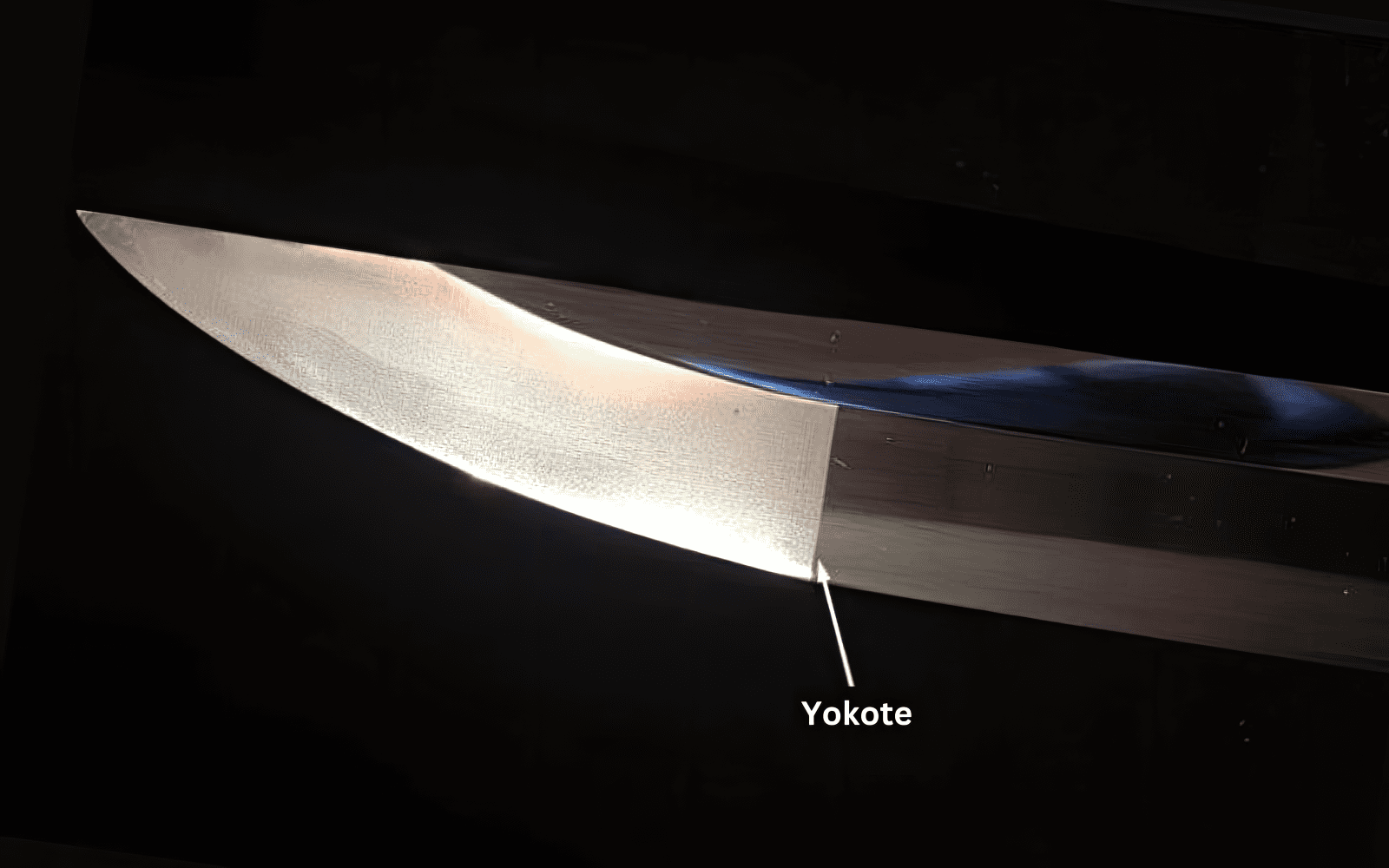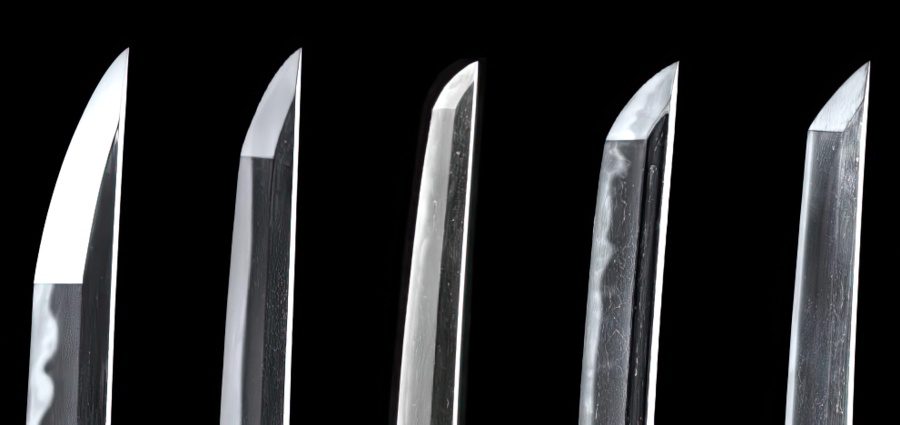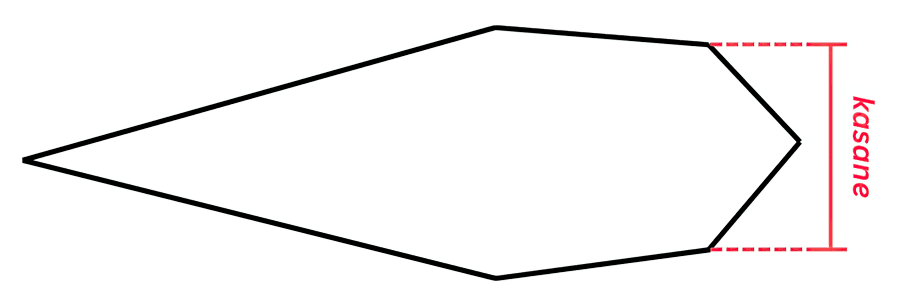What is the Meaning of Yokote on a Katana?
NO AI USED This Article has been written and edited by our team with no help of the AI

A Japanese blade’s tip is often defined by a yokote line, which separates the point area from the body of the blade. It is often examined during blade measurement and sword appraisal, though not all Japanese blade structures feature a yokote.
Anatomy and Related Terminologies

- Yokote (横手) – The perpendicular line to the cutting edge, making a clear boundary between the point area and the body of the sword. It extends from the edge to the ridge (shinogi).
- Yokote-ue (横手上) – The blade surface above the yokote line.
- Yokote-shita (横手下) – The blade surface below the yokote line.
- Kissaki – The general term for the point area of the blade. Technically, it is the fan-shaped area at the tip of the blade above the yokote.
- Fukura – The cutting edge in the point area, from the yokote to the tip of the point. It can be straight or rounded.
- Shinogi – The ridge line found on both sides of the blade, located between the cutting edge and the back surface. It runs from the yokote line to the butt end of the tang.
- Ko-shinogi – A diagonal line separating the point area from the back of the blade. It is the continuation of the shinogi.
- Mitsukado – The term literally means three corners. It is the spot where the yokote line meets the shinogi and ko-shinogi.
The Yokote and Various Sword Structures (Tsukurikomi)

Japanese blades have various blade structures, with some featuring a yokote and others lacking it. A yokote is commonly found on shinogi-zukuri blades, characterized by a ridge line (shinogi) running along its entire length and a well-defined tip. These shinogi-zukuri blades emerged after the Heian period and are the most prevalent blade construction in Japanese long swords.

However, many other types of blade constructions lack a yokote. These include the flat-sided hira-zukuri blades commonly seen on tanto and ko-wakizashi. The shobu-zukuri, resembling a Japanese iris (shobu) leaf, also lacks a yokote.
Measuring the Japanese Blade
Not all Japanese blades feature a yokote, though for those that do, it serves as a useful marker in blade measurement. In Japanese sword appraisal, experts examine the physical features of a blade to determine its maker or swordmaking school. Some swordmaking traditions can be recognized by their workmanship, such as the width at the yokote area, blade tip size, and other attributes.
1. Kissaki (Blade Tip) Size

A kissaki refers to the tip of a Japanese blade, particularly its fan-shaped portion. The size of a kissaki is measured by the vertical line extending from the yokote to the tip of the kissaki. It varies in sizes and shapes, which may be small, medium, large, or stubby. Generally, the design of a kissaki varies among different swordmaking schools and historical periods.
Example: The tachi blades produced by the Ayanokoji school are slender, with a small tip (ko-kissaki) but appear wide and stubby (ikubi-kissaki). Sometimes, a wide width is observed both at the yokote area and at the bottom of the blade.
2. Kasane (Thickness of the Back Surface)

Kasane refers to the thickness of the blade, specifically the thickness of the back surface, known as the mune. The thickness at the yokote is called sakikasane (tip thickness), while the thickness at the back notch (munemachi) near the tang is called moto-kasane.
3. Mihaba (Width of the Blade)

Mihaba refers to the width of a blade, measured from the cutting edge to the back edge. A blade’s mihaba can be described as narrow or wide. The width at the yokote is called sakihaba (top width), while the width at the notches (hamachi and munemachi) is called motohaba (bottom width).
Example: The tachi blades of the Awataguchi school in the mid-Kamakura period featured a stubby-shaped tip (ikubi-kissaki), with a wide mihaba in the yokote area.




